
Educators are known for enjoying their summer breaks, but where I travelled this August may surprise you. As the President & CEO of Teachers on Call, I was invited to attend my first Mining & Mineral Resources Educator Tour in Gogama, Ontario, organized by the Canadian Ecology Centre, Mining Matters, and the Ontario Mining Association. My goal was to bring back valuable insights to share with elementary and high school teachers, guidance counsellors, administrators, and parents. Despite being a major driver of the provincial and national economies, mining is a sector that students (and their grown-ups) often know little about. The blog that follows will dive into the mining industry’s technological advancements, its focus on sustainability, the exciting STEM (Science, Technology, Engineering, and Math) and skilled trades job opportunities that students should be aware of—opportunities that can set them up for long-term career success in a rapidly evolving job market.
Coming from Toronto, this was my very first trip to Northern Ontario, and our host for this incredible experience was IAMGOLD’s Côté Gold Mine, one of the newest and most technologically advanced mining operations in Canada. Gogama is a small town located about halfway between Sudbury and Timmins — far from the hustle of city life but rich in mining history and natural beauty. During my tour, I learned about the endless vocational opportunities available in the mining industry. From roles in engineering and environmental science to tech-enabled fields like robotics and AI, mining offers limitless possibilities. Additionally, the sector provides unique flexibility and structure, appealing to those with a ‘work hard, play hard’ mentality. With many roles offering extended time off—sometimes up to half the year—this balance between intense work periods and ample downtime is ideal for those seeking both career success and personal fulfillment.
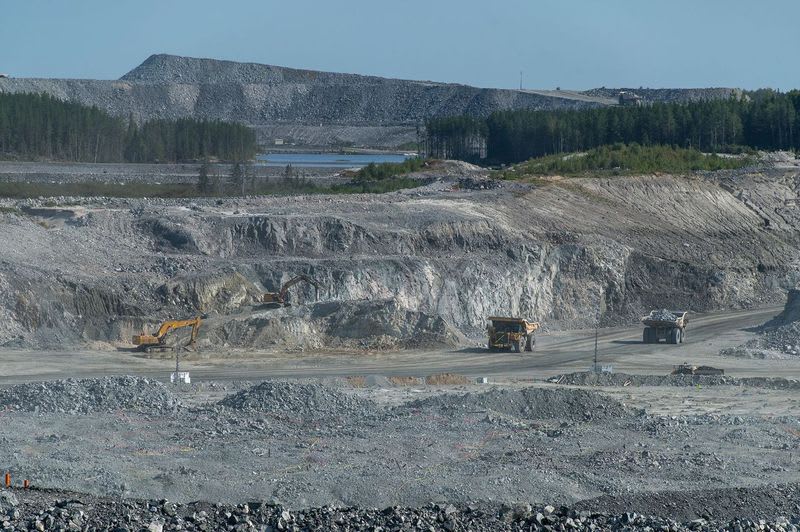
Even if this isn’t the direction for your students, it's essential they are knowledgeable about one of the most important sectors in our province and country. As I discovered on this journey, I had a lot to learn about the vast opportunities in mining. In the blog below, I’ll share my first-hand accounts of mining’s technological advancements, its focus on sustainability, and the wide range of career paths that can set students up for future success.
What Do Students Really Know About Mining?
To conduct a small-scale experiment, I gathered a sample group of elementary and high school students from Toronto to test their knowledge of mining, similar to a hypothesis in a science experiment. While the sample size was small, the findings were quite revealing and provided a snapshot of common misconceptions. When asked about mining, responses from these Toronto students in grades 2, 5, and 10 largely included outdated images—words like “dangerous” and “pollution” dominated their answers, as if mining had been frozen in time, resembling something from the old-fashioned coal mining era with pickaxes and headlamps.
Why Students May Hold Older Ideas About Mining
Many students may have outdated perceptions of the mining industry due to a combination of factors:
- Lack of Awareness Among Adults: Many students are not encouraged to consider mining as a viable career option because adults in their lives—parents, teachers, and guidance counsellors—often lack sufficient knowledge about the industry. Without understanding the modern advancements in mining, including its technological innovations and focus on sustainability, these key figures may overlook mining as a field full of diverse opportunities.
- Limited Curriculum Coverage: Mining is often only briefly covered in school curriculums, particularly in subjects like geography or science, leaving students with a shallow understanding that doesn't include modern advancements in the field.
- Lack of Real-World Exposure: Students who live in urban or suburban areas may not have direct exposure to modern mining operations. Without real-world examples or interactions with industry professionals, their understanding of mining can be based on outdated or generalized knowledge.
- Media Representation: Movies, books, and TV shows still tend to portray mining through historical lenses, such as during the 19th century gold rush era, which reinforces older ideas about mining practices and neglects the multitude of modern developments.
- Video Games like Minecraft: Popular video games like Minecraft, while offering potential for modern learning with the right guidance, still present mining in a traditional manner. Students may mine for resources using older methods, which can reinforce outdated ideas about the mining industry.
My First-Hand Mining Experience
After my return, I shared with the students from my informal science experiment what I had learned. Now I want to share the same with you. Here’s what surprised me the most:
A Modern Industry: Technology, Safety, and Innovation—It’s Not The Jetsons, But It’s Close!
The truth is, mining today looks more like an episode of The Jetsons—a futuristic cartoon about a space-age family with advanced technology—than anything the kids described. The Côté Gold Mine, for example, is one of the most modern mining operations in Canada, if not the world. It’s an open-pit mine, meaning it’s above ground that utilizes state-of-the-art technology, with autonomous vehicles and machinery doing much of the heavy lifting. At one point, we visited a control room with massive screens that felt straight out of a Netflix espionage thriller. They even use a robotic dog for safety inspections, which comes at a far higher price point than the Dog-E Robot Dog named Pongo I gave my kids last holiday season.
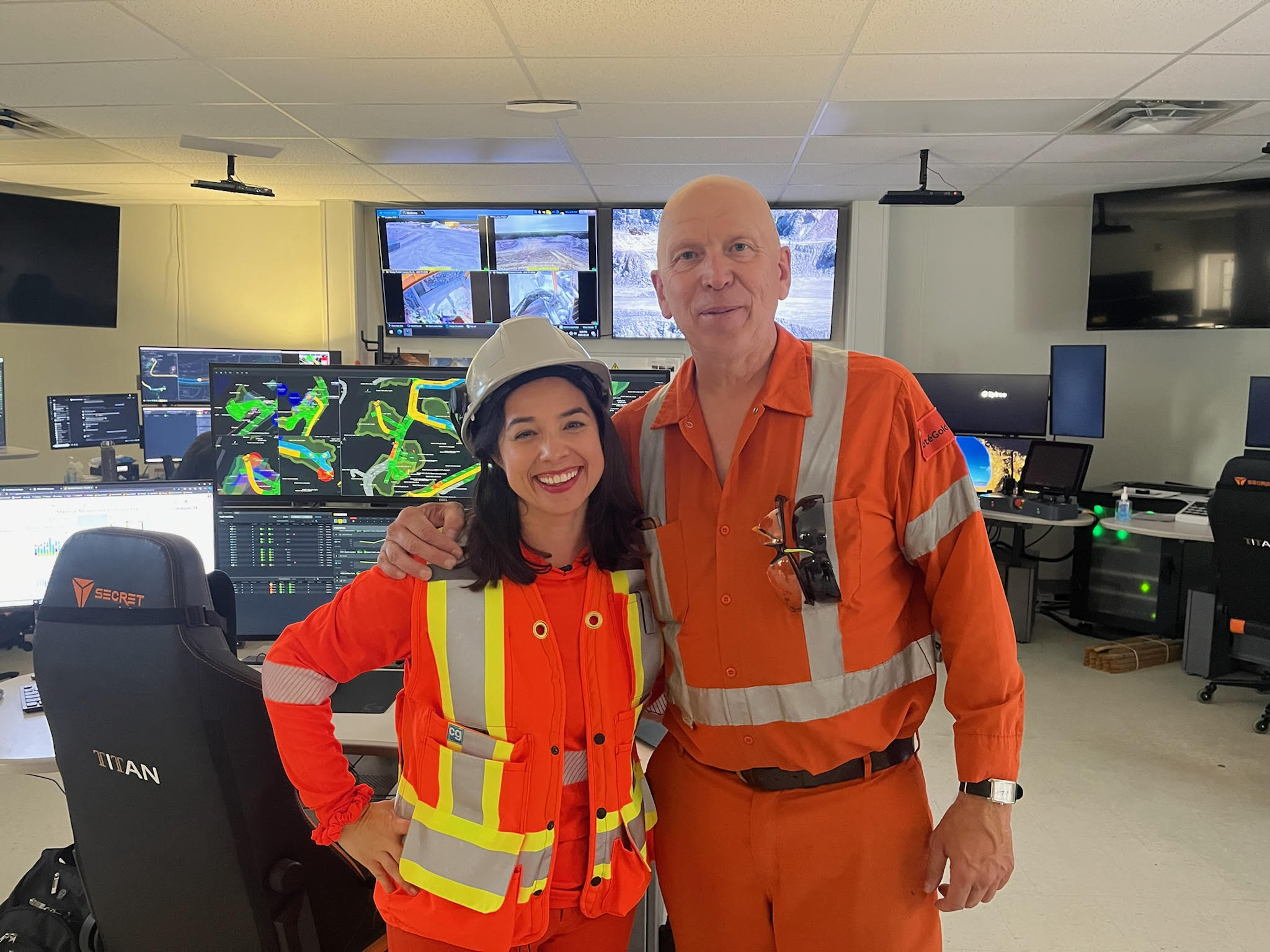
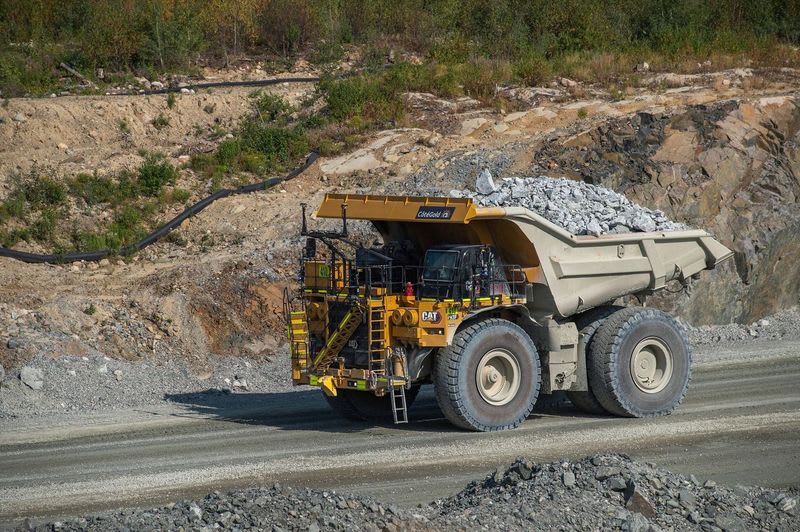
The Education Tour Group and Setting: Just the 20 of Us!
The tour brought together 20 educators from diverse backgrounds and geographies across Ontario. We had representatives from Toronto, Carleton Place, Ottawa, London, North Bay, and beyond. The group included educators from Ontario School Boards, Universities, First Book Canada, the Royal Ontario Museum, and, of course, Teachers on Call. For most of us, this was our first mining tour. However, there were veterans like Rob, a high school science teacher who’s been on more than 15 such tours, and his experience enriched the conversations we had.
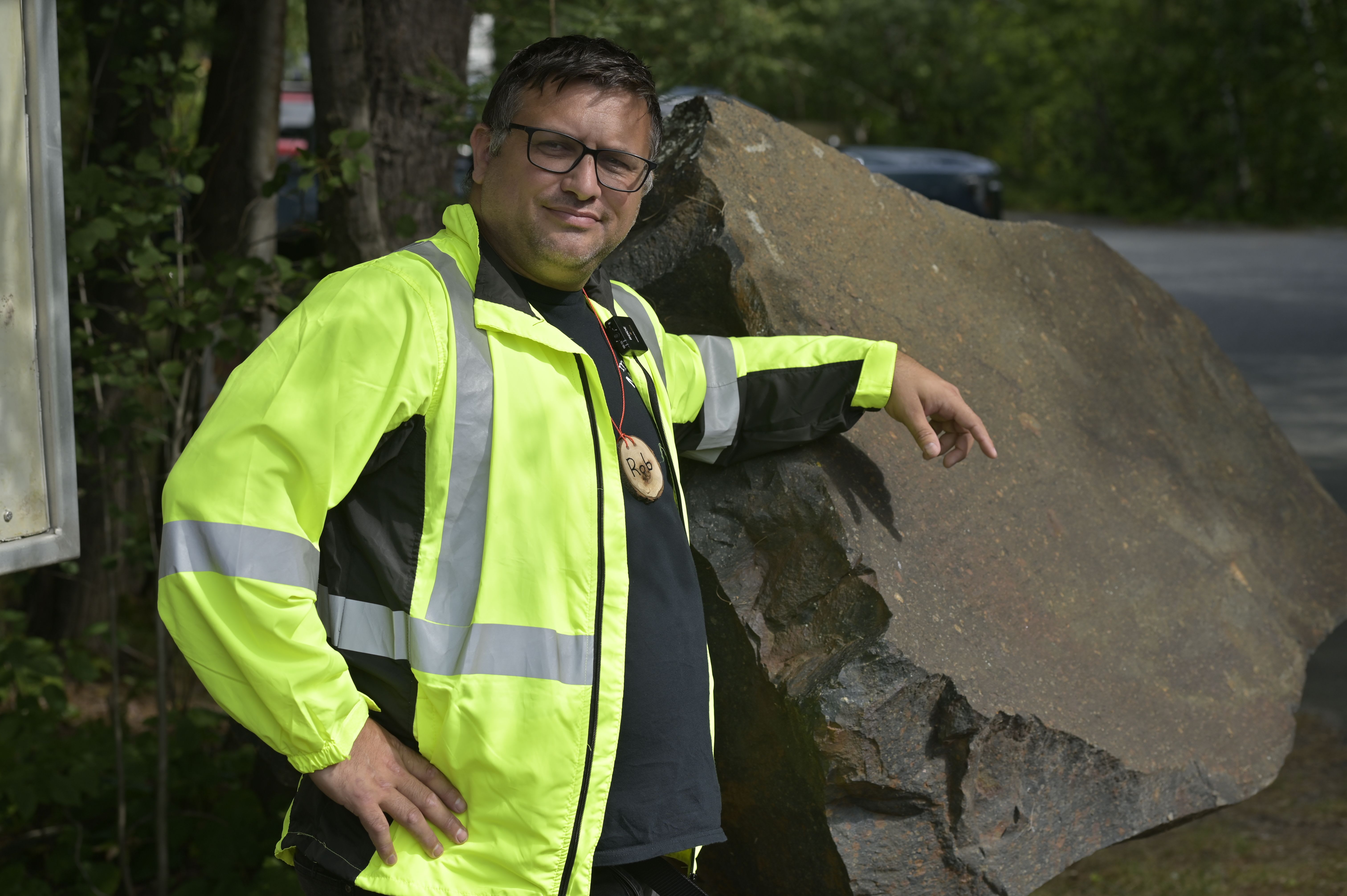
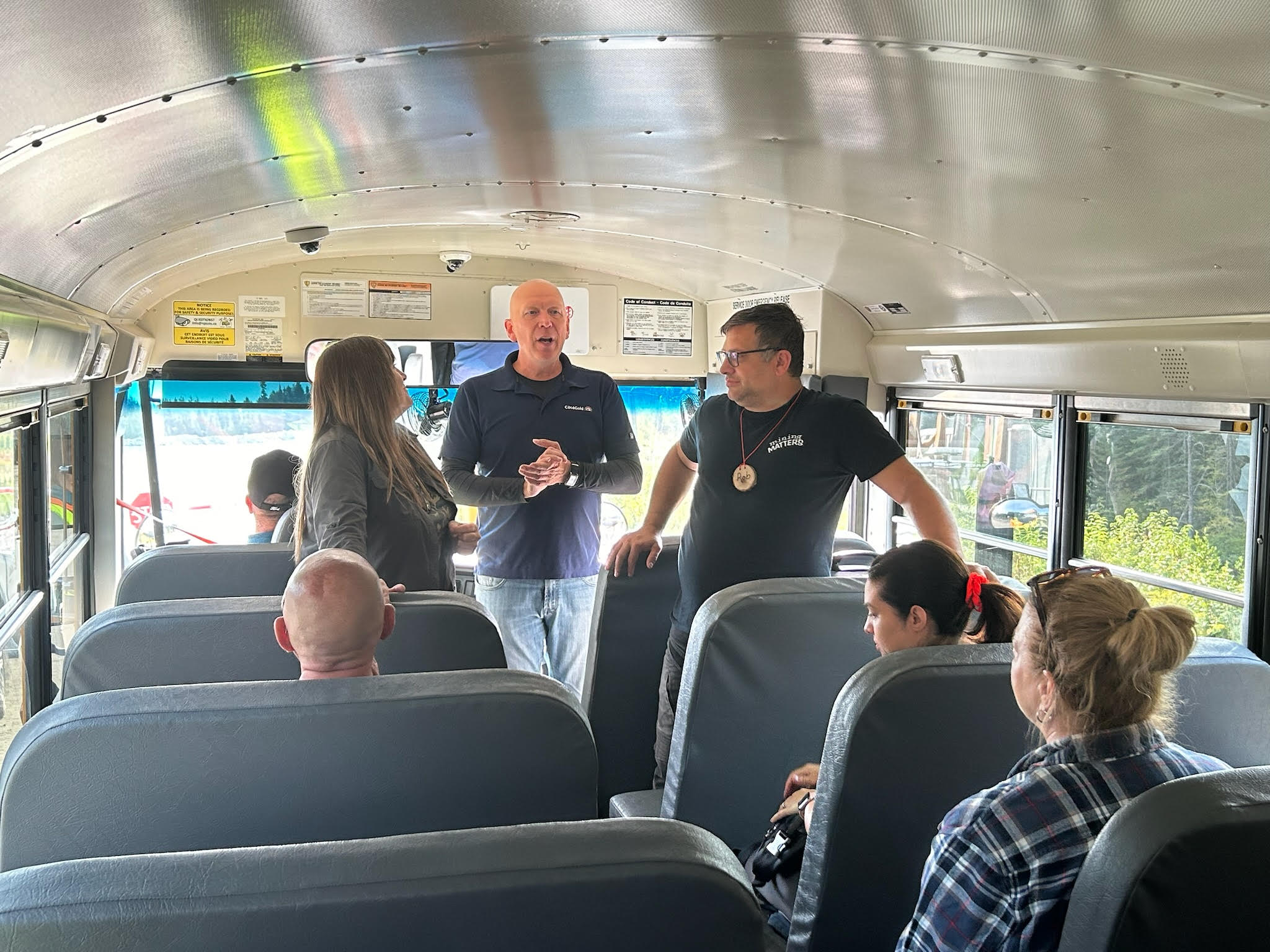
Life at the Mining Camp
We stayed overnight at the mine camp, which gave us an authentic feel of what life is like working at a mine. Despite being referred to as a "mining camp," there were no tents. Each of us had our own private room, and the facilities were far more impressive than I had anticipated—complete with a movie room, gym, billiards and entertainment area, and even basketball courts. The food situation was equally impressive, almost like being on a cruise ship, with professional chefs serving hot meals daily. My favourite was the room filled with every kind of sandwich you could imagine open 24 hours/day. The after-hours experience reminded me of my first year at university, living in a dorm room, sharing meals with friends after a long day of studying. The camaraderie and community we built during our stay truly added to the richness of the experience.
Touring the Mine
During the day, we toured the mine and stopped at various geological points of interest, gaining insights from Côté experts about the process of extracting gold. The science teachers on the tour were particularly excited to point out that "Au," the symbol for gold, is atomic number 79 on the periodic table. But it wasn’t just about what we saw—it was about how these experiences can help us connect students to the real-world opportunities available in the mining and mineral sector.
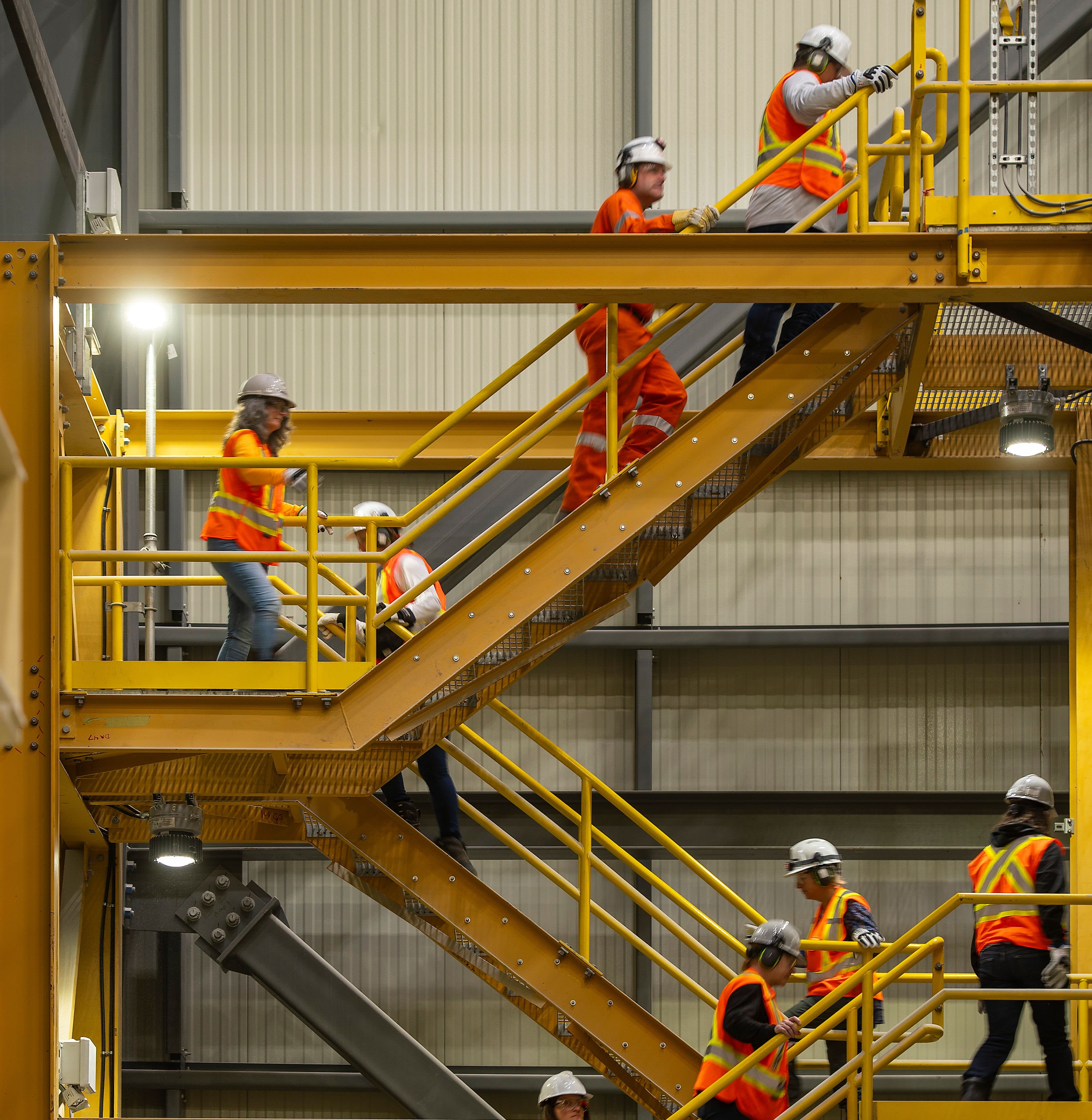
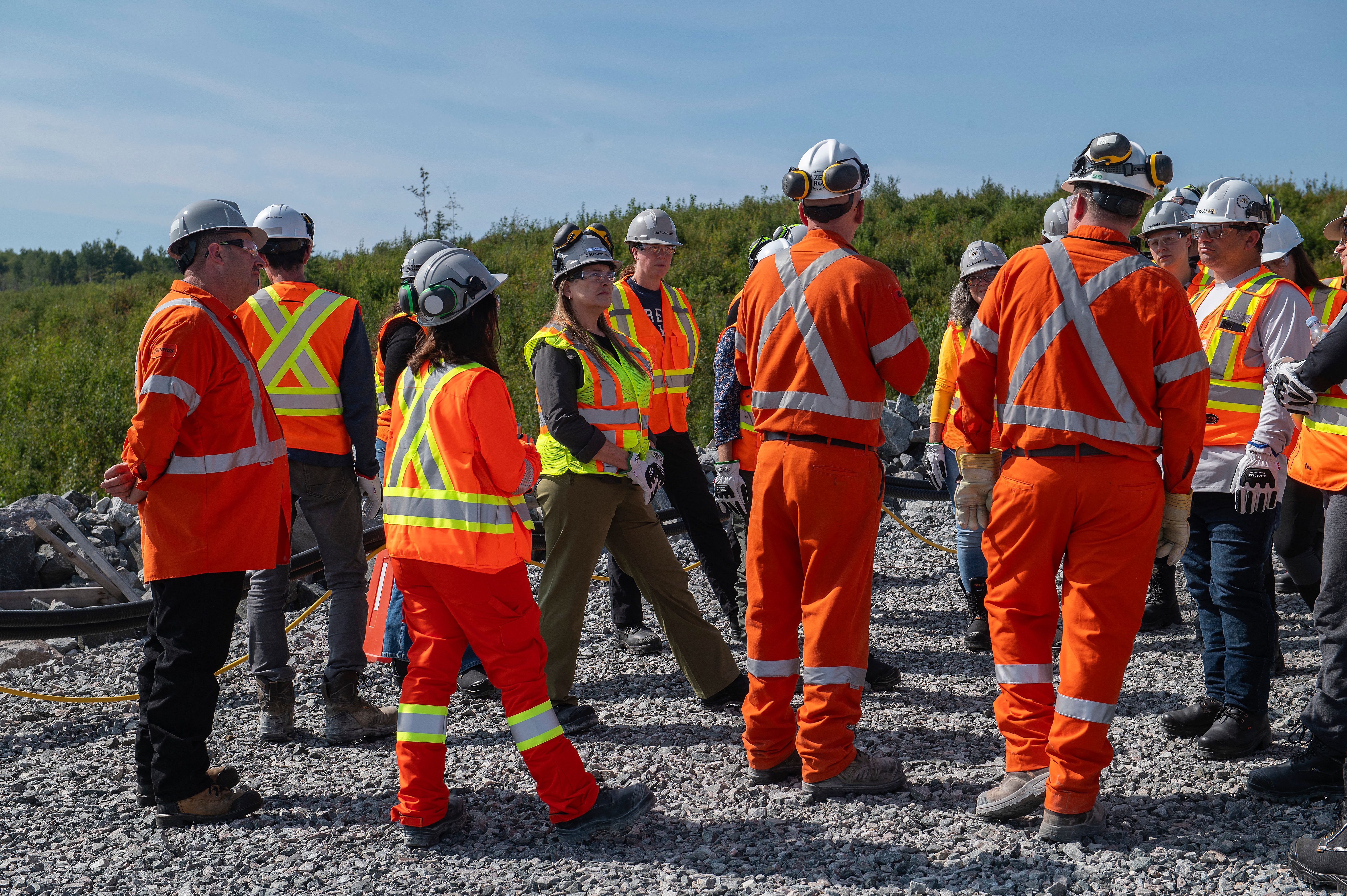
Experiencing Environmental Stewardship
Additionally, the tour highlighted the environmental stewardship efforts in the region. Sudbury, which is nearby, has undergone a remarkable regreening project, planting over 2,000,000 trees, transforming it into a global model for environmental recovery. This has led to residents of the region of greater Sudbury having some of the cleanest air in Ontario, a testament to the mining industry’s commitment to sustainability and responsible practices that reduce its environmental footprint.
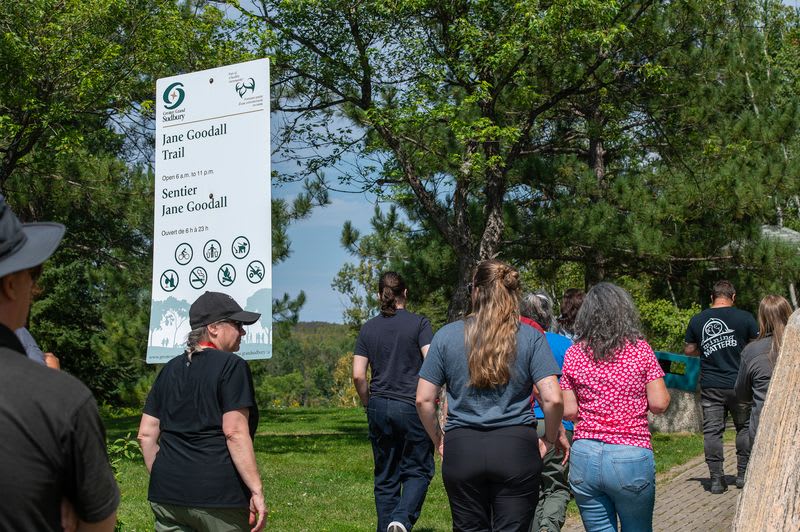
Connecting to Real-World Applications
While many people associate gold with jewellery, it has many more real-world applications, including in electronics, aerospace, and even medicine due to its conductivity and resistance to corrosion. While I visited a gold mine, it is just one example of Ontario’s rich mining landscape. Ontario is home to 36 active mines, including nickel, copper, platinum, palladium and other essential minerals and metals. Raw materials used in everything and everyday that students can relate to—like the phones in their pockets and the computers they use daily. The copper and gold mined in Ontario are critical for the electronics industry, powering devices like smartphones and laptops. Copper is a highly efficient conduit, so it is used in renewable energy systems to generate power from solar, hydro, thermal and wind energy across the world. This power electrifies our school, homes and hockey rinks. By making these connections, students can see how mining impacts their daily lives in ways they may not have realized.
Curriculum Connections: What’s Covered (and What Could Be!) in Ontario Schools
The Ontario Curriculum does touch on mining, but mostly at a surface level. The grades where teachers most commonly connect mining to the curriculum starts in Grade 4 for the rocks and minerals unit and then again in select high school science courses. However, there is room to go above and beyond in all grades to integrate real-world connections. Many teachers may feel hesitant to fully engage with these units, worried they might seem "boring" or difficult to teach. However, this doesn't have to be the case. With creative approaches and real-world applications, these topics can become dynamic and interesting for students. While not mandated, there is room to connect the Ontario Curriculum to mining-related topics by integrating real-world examples and discussions. Here are some ideas:
Elementary School: Opportunities for Direct and Indirect Connections
Grade 1 Science introduces students to materials, objects, and everyday structures, which can provide an opportunity to discuss where materials like metals and minerals come from.
Grade 2 Science covers air, water, and the environment, where teachers could introduce the idea of how industries, including mining, use and impact these natural resources and what they are doing to reduce their impact.
Grade 3 Science introduces students to soil, though mining is not explicitly covered. It can be connected to discussions around how minerals and metals have naturally occurred below the earth’s surface.
Grade 4 Science and Technology introduces students to rocks and minerals, but the focus is only for a few days as part of a larger unit. Beyond Grade 4, connections to mining are minimal, although environmental education is integrated in later grades.
Grade 5 Science explores renewable and non-renewable energy sources, though mining is not explicitly highlighted. There could be ties into a broader understanding of natural resource extraction and its role in fueling the green energy transition. Without mining, there is no energy.
Grade 6 Science introduces students to biodiversity and sustainable ecosystems, which can be connected to how mining companies are stewards of the land, incorporating scientific and traditional knowledge into ecosystems, land use, and biodiversity design and protection.
Grade 7 Science includes Heat in the Environment, which provides opportunities to discuss the energy used in industries like mining and how heat and energy transfer are involved in mining processes. It could also touch on environmental concerns like carbon emissions, and efforts to significantly reduce emissions from mining activities.
Grade 8 Science covers Water Systems, which can tie into the importance of local water supplies, and how industries such as mining have robust water management plans as part of their environmental sustainability commitments.
Secondary School: Opportunities for Direct and Indirect Connections
In high school, mining-related topics are covered more frequently but are still scattered across different subjects. There is room to expand these discussions when teachers are comfortable with the material.
Grade 9 Geography (CGC1D/CGC1P) introduces students to natural resources and industries, including mining, but it’s a general overview
Grade 9 and 10 Science (SNC1D/SNC1P and SNC2D/SNC2P) may briefly touch on mining in the context of Earth’s resources, though it’s not a major focus.
Grade 9/10 Introduction to Business (BBI1O/BBI2O) provides students with an overview of investment principles, and industries like mining may be discussed in the context of stock markets, though it is not a mandated focus.
Grade 11 Environmental Science (SVN3M) may include mining-related topics, particularly around resource management and sustainability.
Grade 11 Financial Accounting Fundamentals (BAF3M) may cover investment decisions and corporate financial statements, with the potential for discussions on sectors like mining when considering industries on the stock market and drivers of GDP growth.
Grade 12 World Issues (CGW4U) can cover resource extraction, environmental impacts, and global industries like mining; while also touching on the necessary role mining will play in reaching a net zero future.
Grade 12 Earth and Space Science (SES4U) provides a deeper dive into geological processes, including mining, though this course is rarely offered at many secondary schools.
The limited exposure in the Ontario curriculum suggests that many students don’t get a full picture of the importance and scope of mining. This makes it even more critical for connecting students to real-world opportunities that extend beyond the classroom.
Engaging Classroom Ideas: Bringing Mining to Life
- Invite Guest Speakers or Virtual Field Trips: Connect students with professionals from the mining industry, such as geologists, engineers or skilled trades, or arrange virtual tours of mines to give students a firsthand look at mining operations. Invite Mining Matters, a charitable organization dedicated to educating young people to develop knowledge and awareness of Earth sciences, the minerals industry and their roles in society, into your classroom,
- Rock Walks and Outdoor Exploration: Take students on local rock walks to explore different types of rocks and minerals in your area. Encourage them to compare and contrast what they find across various locations.
- Showcase Tangible Mining Artifacts: Bring items like fool’s gold, mining core samples, or items from rock clubs into the classroom to give students something tangible to examine.
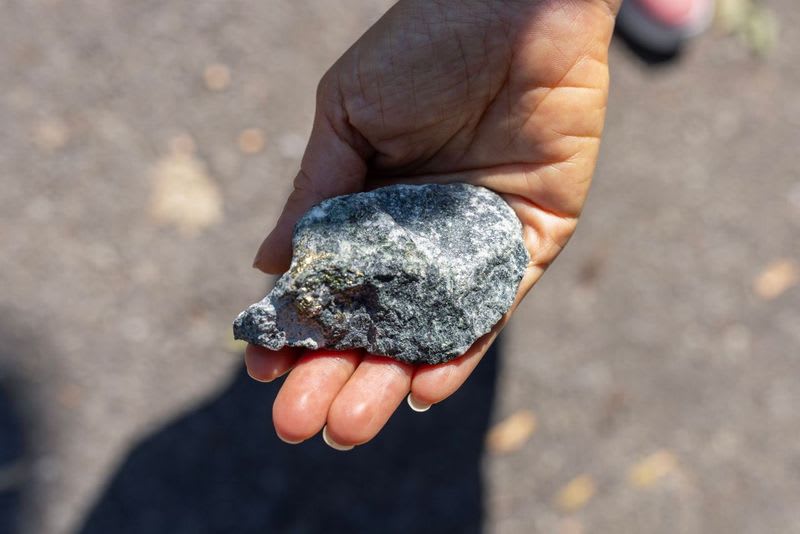
- Demonstrate Safety Equipment: Incorporate lessons on safety and hazards by showing PPE used in mining, with a focus on inclusive PPE options. This connects with the scientific method and safety protocols that are part of every grade’s curriculum.
- Hands-On Exploration: Encourage students to investigate and classify rocks and minerals in a practical setting, tying their findings back to classroom lessons on geology and natural resources.
- Mine Evolution: Build the ultimate modern mine to unlock our green future. Designed by Science North and CIM, this interactive game allows users to play in an open map, collect Earth’s treasures across Canada to unlock new technology, and build the ultimate modern mine. Play for free! Available in English and French and for PCs, Android and Apple devices. The game is also downloadable and playable offline. This tool helps make mining concepts more engaging and accessible for students through gamification.
- Explore Study Pathways at Post-Secondary Education Fairs: Encourage students to attend the Ontario Universities' Fair (OUF) from October 5-6, 2024, Ontario College Fair (OCF) from October 16-17, 2024, regional fairs and information sessions to encourage exploration of post-secondary programs and studies that align with mining-related careers, helping them connect their school learning to future opportunities.
- Take Students on Field Trips to Career Fairs: Accompany students in grades 7 to 12 to job fairs like Level Up! Career Fair hosted by the Ministry of Labour, Immigration, Training and Skills Development or Skills Ontario to introduce students to different career paths, such as skilled trades related to mining.
- Scholarships: Encourage your students to pursue mining and geoscience in their post-secondary studies and apply for scholarships that can help support their education and future careers. Check out this list here.
Parents as Partners: Connecting What Kids Learn to the Real World
Parents can be instrumental in reinforcing mining-related topics by engaging in various activities that make the subject more relatable and exciting for children.
- Engage in Discussions: Talk to children about what they are learning in school, whether it's about rocks and minerals in Grade 4 or the role of mining in the green energy transition to help spark further interest.
- Visit Local Science Museums: Take children to museums or educational exhibits where they can see mining and geological displays firsthand. At the Royal Ontario Museum, treasures from Earth and space unfold in a suite of galleries designed for exploration and discovery. Meteorites, rocks, precious minerals and gems contribute to one of the finest museum collections on display anywhere. In total, over 4.5 billion years of history are represented in the gallery, and reflect the dynamic geological environment in which we live.
- Watch Documentaries Together: Find documentaries or videos on topics like mining, geology, or natural resources that can provide real-world context to classroom lessons.
- Check out the Ontario Mining Association’s This is Mine Life platform with dozens of mining career stories.
- The World Gold Council recently produced Gold: A Journey with Idris Elba
- Discuss Mining in Everyday Life: Help children understand the relevance of mining by pointing out how minerals and metals are used in everyday products, from electronics to electric vehicles to construction materials.
Parents' involvement in these activities provides valuable real-world context, helping to solidify the lessons learned in school and make the subject matter more dynamic and relevant.
Job Opportunities in Mining: A Growing Demand for Talent
The mining industry is facing a significant workforce challenge. According to the Ontario Mining Association, mining in Ontario supports approximately 31,000 jobs directly and 47,000 jobs associated with mineral processing and mining supply and services. The Canadian mining industry will need to hire between 80,000 and 113,000 new workers between 2020 and 2030. This demand is driven primarily by the need to replace retiring workers, not even accounting for the expected expansion due to the critical minerals boom.
Related university enrollment numbers are down, and the number of graduates is even lower, creating an urgent need to address this talent gap. In addition to traditional roles, the industry is evolving rapidly with technology. Approximately 50% of mining companies plan to either maintain or hire more data analysts, environmental experts, robotics and AI professionals, and computer scientists and coders.
During my time at the PDAC (Prospectors & Developers Association of Canada) conference in March 2024, I had the chance to speak with mining professionals from all walks of life—lawyers, accountants, geologists, engineers, and businesspeople—across a wide range of companies and disciplines. It struck me how happy and fulfilled they all were in their careers, which highlights the diverse and exciting opportunities within the mining sector. The on-site people I spoke with also boasted about one of the most unique parts of their jobs: “blowing things up.” There’s a tangible excitement in the industry that is hard to find elsewhere.
Another unique aspect of mining work is the structure, with many positions offering longer days on-site but only requiring work for half the year. A common schedule is two weeks on and two weeks off, a setup that’s especially popular with people in their 20s who want to travel, pursue hobbies, or explore other interests during their extended time off.
For parents concerned that a career in mining might take their children away from major cities, there’s good news. While many mining jobs are in remote locations, there are plenty of opportunities in urban hubs. Toronto, for example, is a major center for mining jobs, home to the head offices of many mining companies, consulting firms, and financial institutions. It’s also the location of the Toronto Stock Exchange, which lists more mining companies than any other exchange in the world. This means there are ample roles in law, finance, accounting, and business development connected to the mining industry without leaving the city.
The mining sector offers benefits such as strong job security, excellent compensation, and the opportunity to make a positive social and environmental impact. Workers tend to earn significantly more compared to many other sectors. On average, mining employees can earn up to 30% more than in comparable positions in other industries. Many mining professionals I met on the tour and at PDAC boasted 10 to 20+ years in the sector, often with the same company. You don’t hear that kind of career stability as often these days! While some may fall into mining accidentally, it doesn’t have to be that way. With the right education and exposure, students can consider mining as a deliberate and rewarding career choice
Inclusivity in Mining
Women have historically been underrepresented in Ontario’s mining industry. However, the industry is making great strides to improve this.
Inclusive Clothing
As a petite female—5'2" on a good day—I wasn’t sure what to expect. But I was pleasantly surprised by the stylish and form-fitting Personal Protective Equipment (PPE) I wore, courtesy of Covergalls. This brand promotes inclusivity by designing gear specifically for women. I even received a cute orange scrunchie to tie back my long hair! This experience showed me that the industry is taking steps to create more inclusive spaces for women, ensuring that the workforce better reflects society.
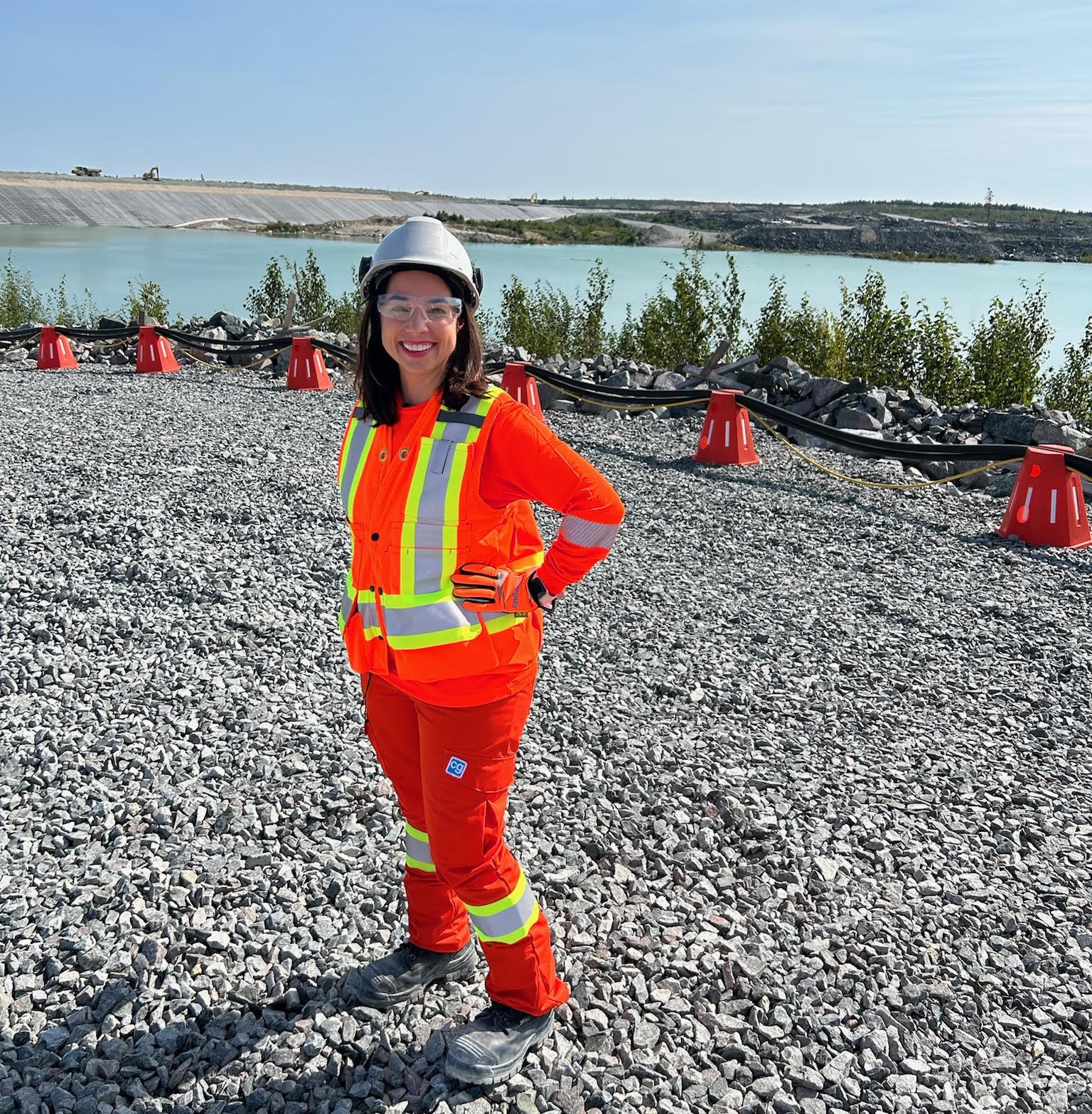
Non-profit organizations and programs dedicated to advancing women:
I have attended fireside chats, lunch and learns, and various events hosted by these groups, where professional development opportunities and support for women in mining are abundant. These gatherings offer mentorship, networking, and career-building resources, fostering an environment where women help each other advance their careers and grow within the industry.
Women in Mining Canada (WIMC): A national organization that focuses on empowering women in the mining sector through professional development, educational initiatives, and providing a strong national voice within the global mining community.
Women in Mining Toronto: Part of the global Women in Mining movement, this chapter offers networking, mentorship, and leadership development opportunities to women in the Toronto mining sector, helping them connect with peers and industry leaders.
Women Who Rock: A program dedicated to highlighting the achievements of women in the mining industry, providing a platform to share experiences and encouraging more women to pursue careers in mining. It fosters a supportive community for professional growth.
Indigenous Relations: Respect for Land and Partnership
In schools, children learn about the National Day for Truth and Reconciliation (also known as Orange Shirt Day), which takes place annually on September 30th to honour and acknowledge the history and impact of residential schools on Indigenous communities. However, there is much more to understanding Indigenous relations, especially in sectors like mining, which are working closely with Indigenous communities to provide valuable job opportunities. The mining sector is the largest private-sector employer of Indigenous people across Canada.
Mining companies are actively working to support Indigenous communities not only through employment but also through educational opportunities and long-term job creation to benefit future generations. Mining companies actively give back to support local economies, helping to create jobs for Indigenous peoples and building long-term partnerships based on mutual respect.
Mining companies and local Indigenous communities also actively create meaningful partnerships on land stewardship. For example, At Côté Gold Mine, and under the traditional guidance of a local Indigenous nation, the mine plan moved a lake to protect the local fish population, respecting the land and local ecosystems.
Bringing Back the Knowledge
I hope this information will spark more conversations about modern mining, career pathways, and the vast opportunities the industry offers. By sharing this knowledge, we can ensure that more students are aware of the exciting, diverse, and high-paying career options available to them in this rapidly evolving sector.
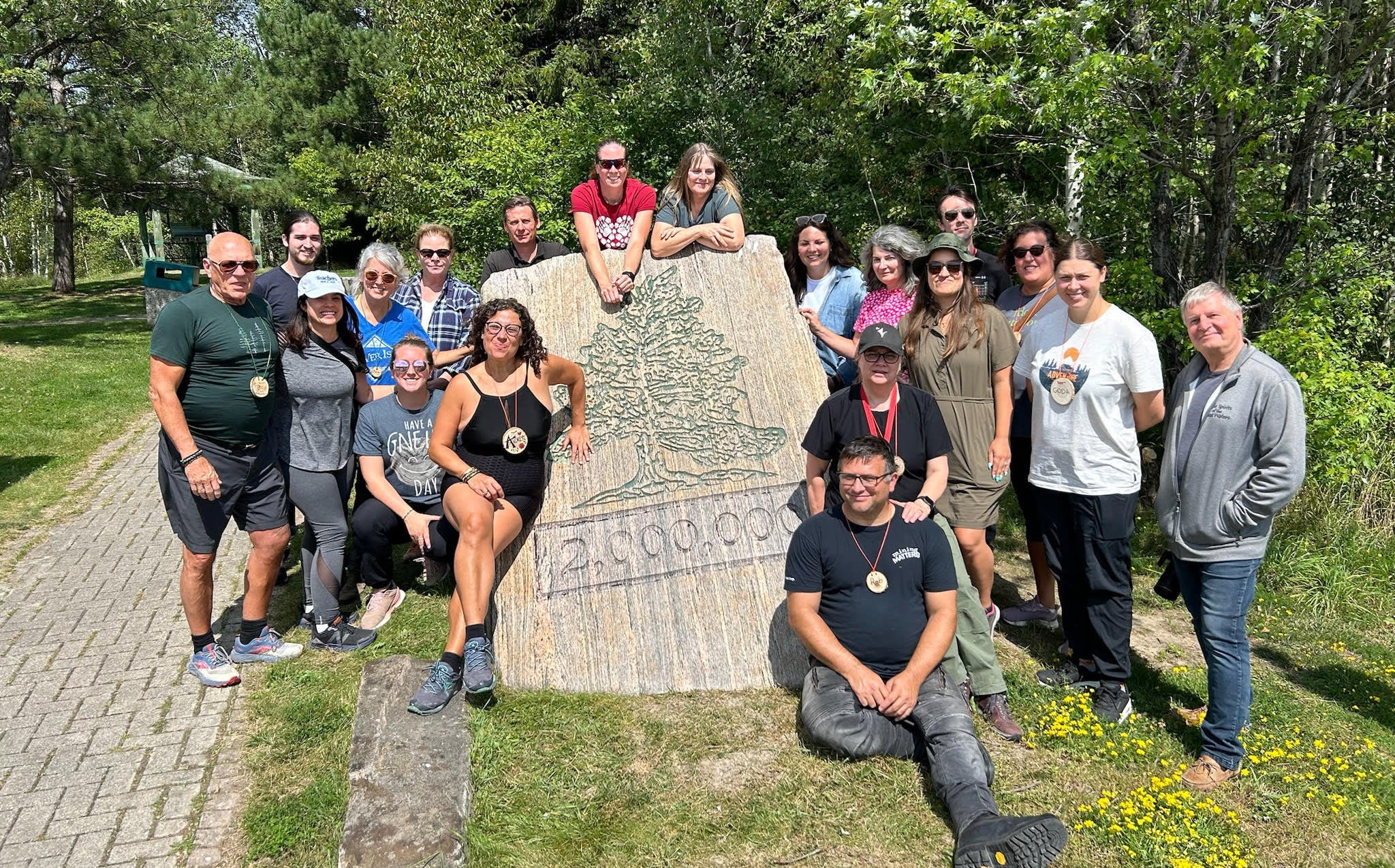
A Final Thought
And as for my son, it’s safe to say mining has found its way into his world. Since my return, every time he sees a Tonka toy truck commercial on YouTube, he excitedly points and says, 'Look, Mommy, it’s mining!' He was one of the students in my small study, and like many of the others, he initially had little awareness of the industry. Watching his knowledge grow now, just like with the other students, highlights how even small exposures to the mining world can significantly shape their understanding of this vital sector. It’s a start—it’s on his mind!
This blog has been created in partnership with the Canadian Ecology Centre, Mining Matters, and the Ontario Mining Association, reflecting our shared mission to inform educators, parents, and students about modern mining, career pathways, and the vast opportunities the industry offers. Special thanks to IAMGOLD as our mining tour host. Photography during the mining tour by Michael Scholz, with the image of the fool's gold (pyrite) rock by Jennifer Allison of JShutter Photography.
Related Articles View All
Featured in The Teaching Librarian: Rock-Solid Reads That Demystify Mining for Today’s Students
In the latest edition of The Teaching Librarian - the magazine of the Ontario School Library Association - our President, Joanne Sallay, contributes an insightful article titled "The Buzz: Rock-Solid Reads to Demystify the World of Mining." In this issue, Joanne takes a unique approach to the theme Mystery @ Your Library by stepping away from fictional mysteries and instead exploring how educators can help unravel real-world mysteries across subjects and industries—particularly the often-ove...
Teachers on Call Shines in CBC Sudbury News Feature
Featured in CBC Sudbury News, discover how Teachers on Call President & CEO Joanne Sallay's participation in a mining educator tour is inspiring the next generation of STEM and skilled trades professionals.
Teachers on Call Featured in Sudbury.com for Educator Mining Tour
Discover how Joanne Sallay, President & CEO of Teachers on Call, explored the Côté Gold mine in Northern Ontario. Featured in Sudbury.com, this immersive mining tour for educators sheds light on the mining industry's impact on education, sustainability, and future STEM career opportunities.

